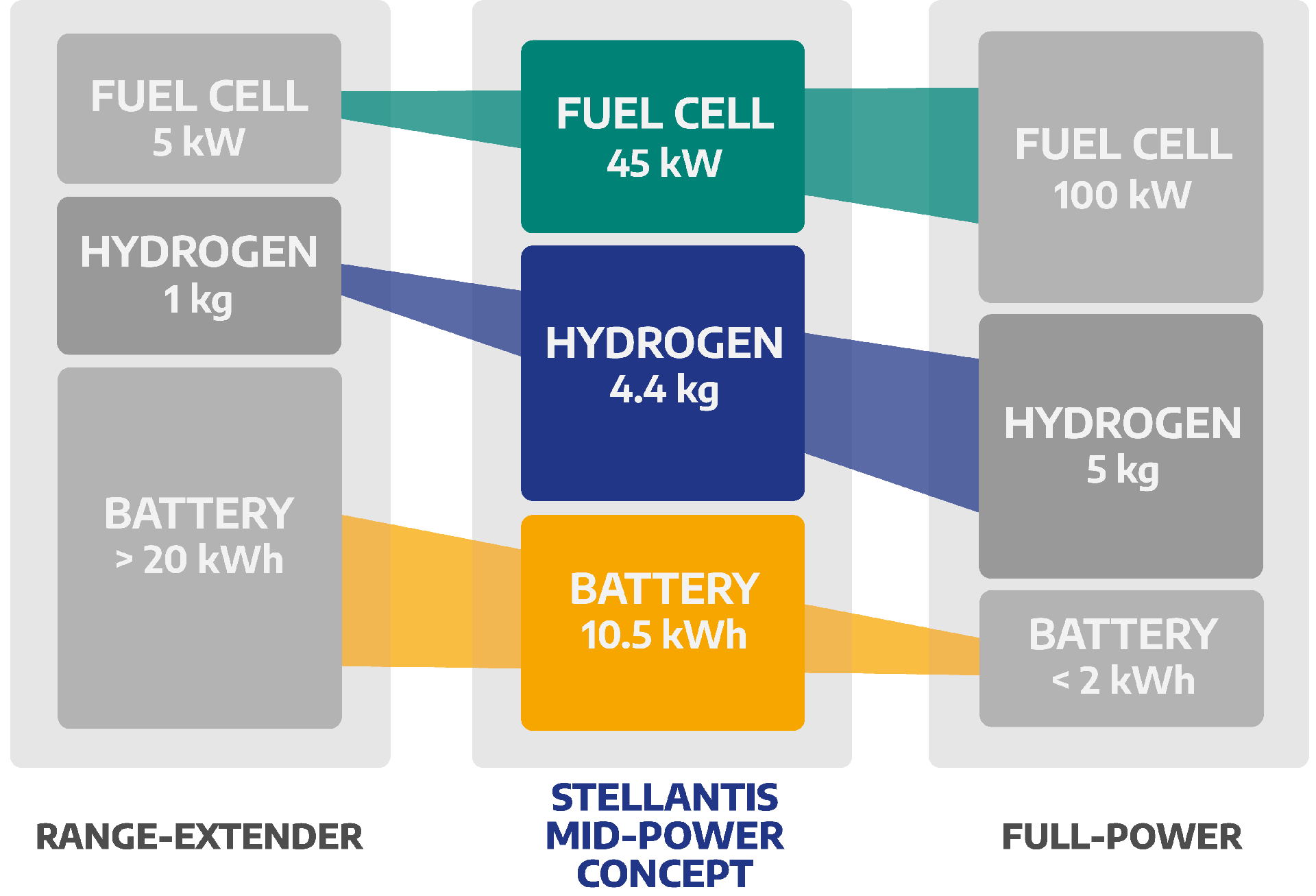

Hydrogen Fuel Cell Technology
Beyond electrification, Stellantis is pursuing a broad spectrum of energy carriers and powertrain technologies to address the widest range of mobility requirements. And this includes hydrogen.
Stellantis has developed a Hydrogen Fuel Cell Zero Emission solution which combines the advantages of hydrogen fuel cells and electric battery technology in a Fuel Cell Electric Vehicle (FCEV). This solution is particularly suited to the needs of light commercial vehicle (LCV) customers requiring long-range, fast refueling and zero-emissions...all without compromising payload capacity.
Given the profile of our customers, we have designed a mid-power architecture solution which delivers a range of more than 400 kilometers (certification pending) and refueling in just 3 minutes. Hydrogen provides the energy needed for extended driving range, while a medium capacity battery provides the power for dynamic performance in addition to energy recovery and plug-in capability.
To preserve payload capacity, all components of the fuel cell propulsion system are external to the cargo space. The system can also be integrated with our existing battery electric LCV platform, meaning minimum variation and maximum synergies between the full battery-electric and the hydrogen versions.


The mid-size Citroën Jumpy, Peugeot Expert and Opel Vivaro vans were chosen as the launch models for this technology, enabling rapid adaptation of the technology itself and rapid integration with our existing production processes.
These first models, produced at the Opel Special Vehicles facility in Rüsselsheim, Germany, were launched in Europe at the end of 2021.
For development of the two main systems - hydrogen storage and fuel cell stacks - Stellantis worked in strategic partnership with Faurecia and Symbio who have best-in-class capability in these technologies.
What is a fuel cell?


By combining hydrogen and air in the presence of a catalyst, a fuel cell generates electricity to drive an electric motor, with water vapor as the only by-product. So, compared to a battery, a fuel cell is an energy converter rather than a storage device.
Fuel cell electric vehicle architectures range from a “full-power” configuration, at one end of the spectrum, to a “range-extender” configuration, at the other.
- Full-Power: a fuel cell is the main source of propulsion under all operating conditions. This requires a large and powerful fuel cell and a small battery.
- Range-Extender: a battery-electric vehicle with a large battery is combined with a small low-power fuel cell that extends the range of the vehicle by supplying power to the battery. However, the fuel cell is unable to generate enough power to propel the vehicle when the battery is empty.
At Stellantis, based on customer requirements, we have chosen a mid-power solution.


